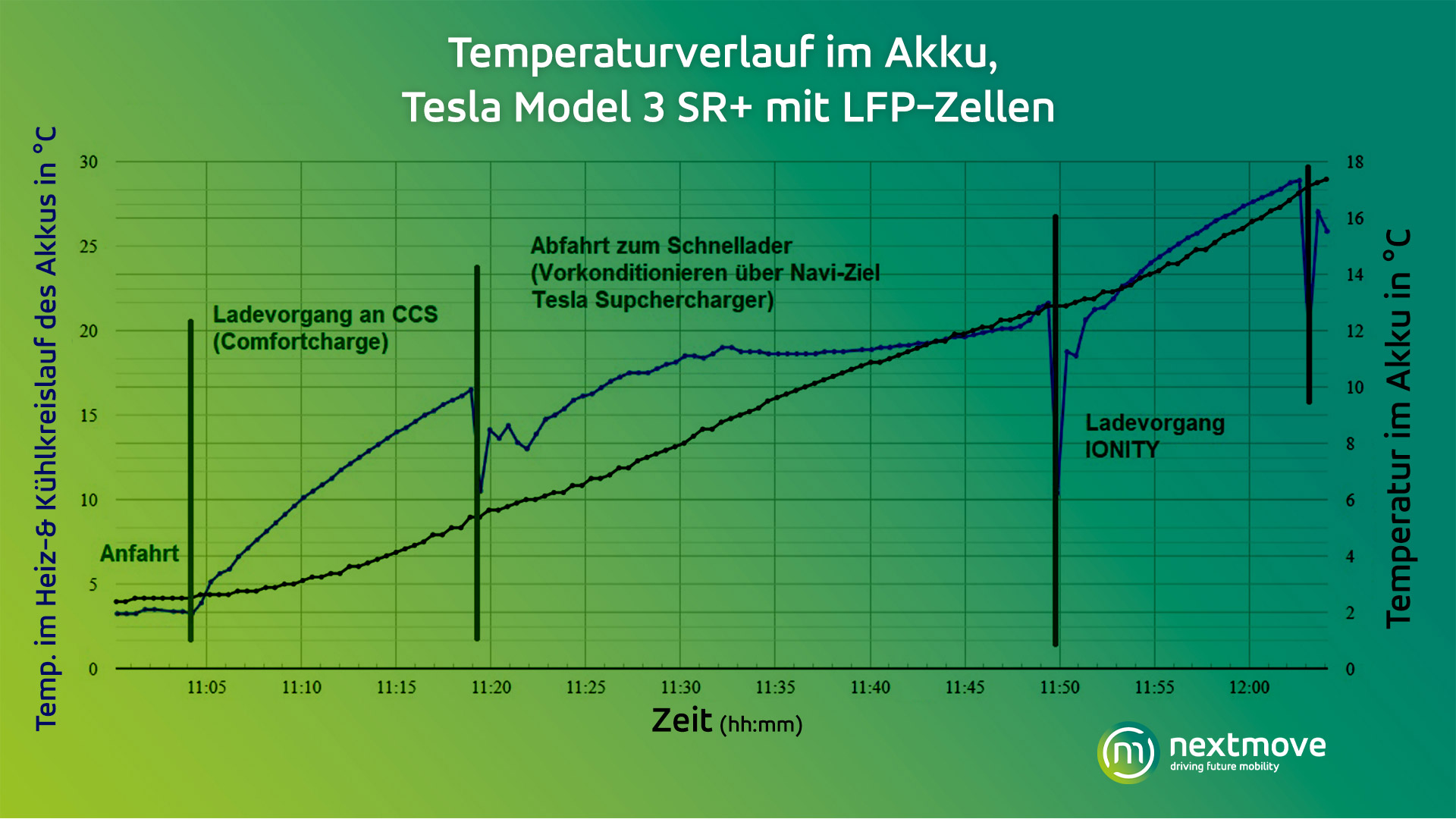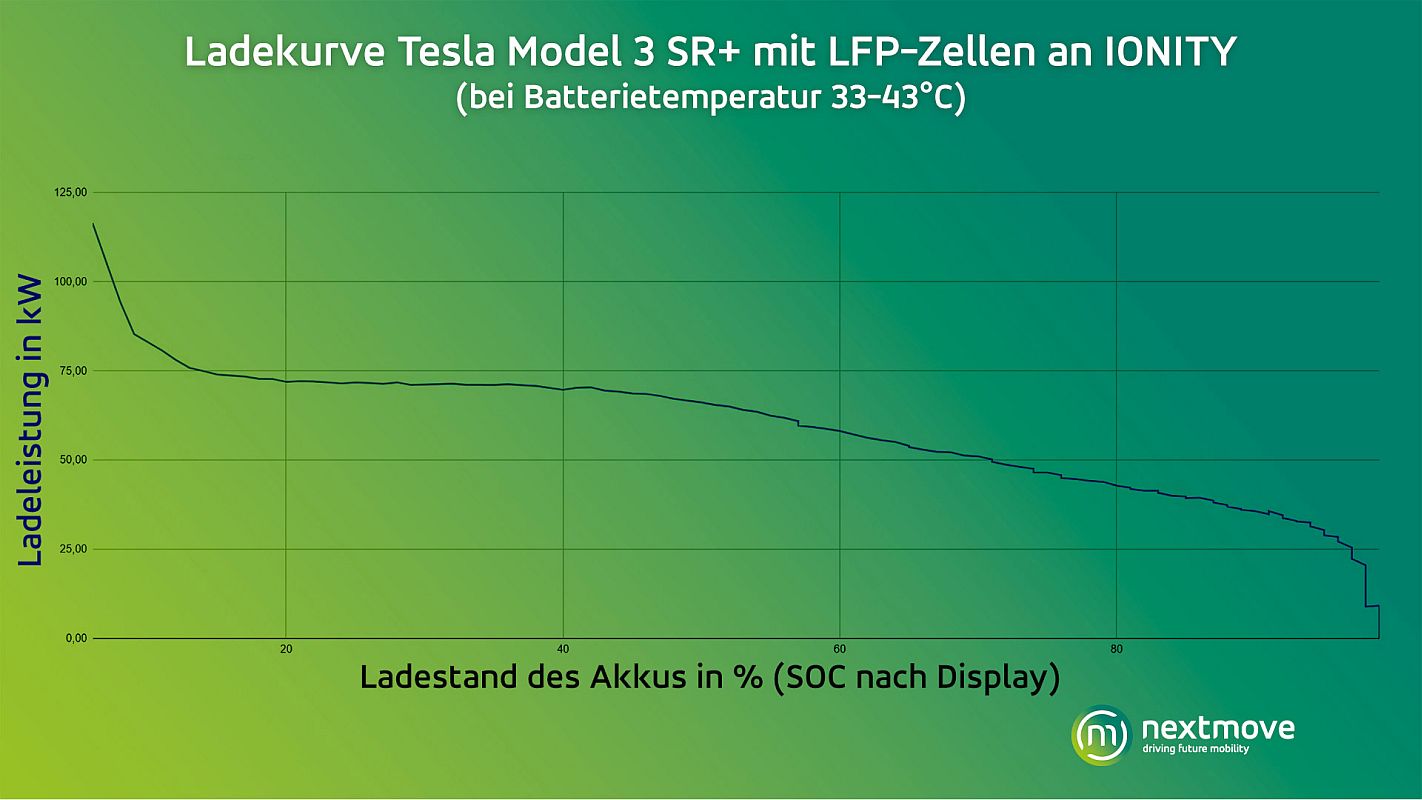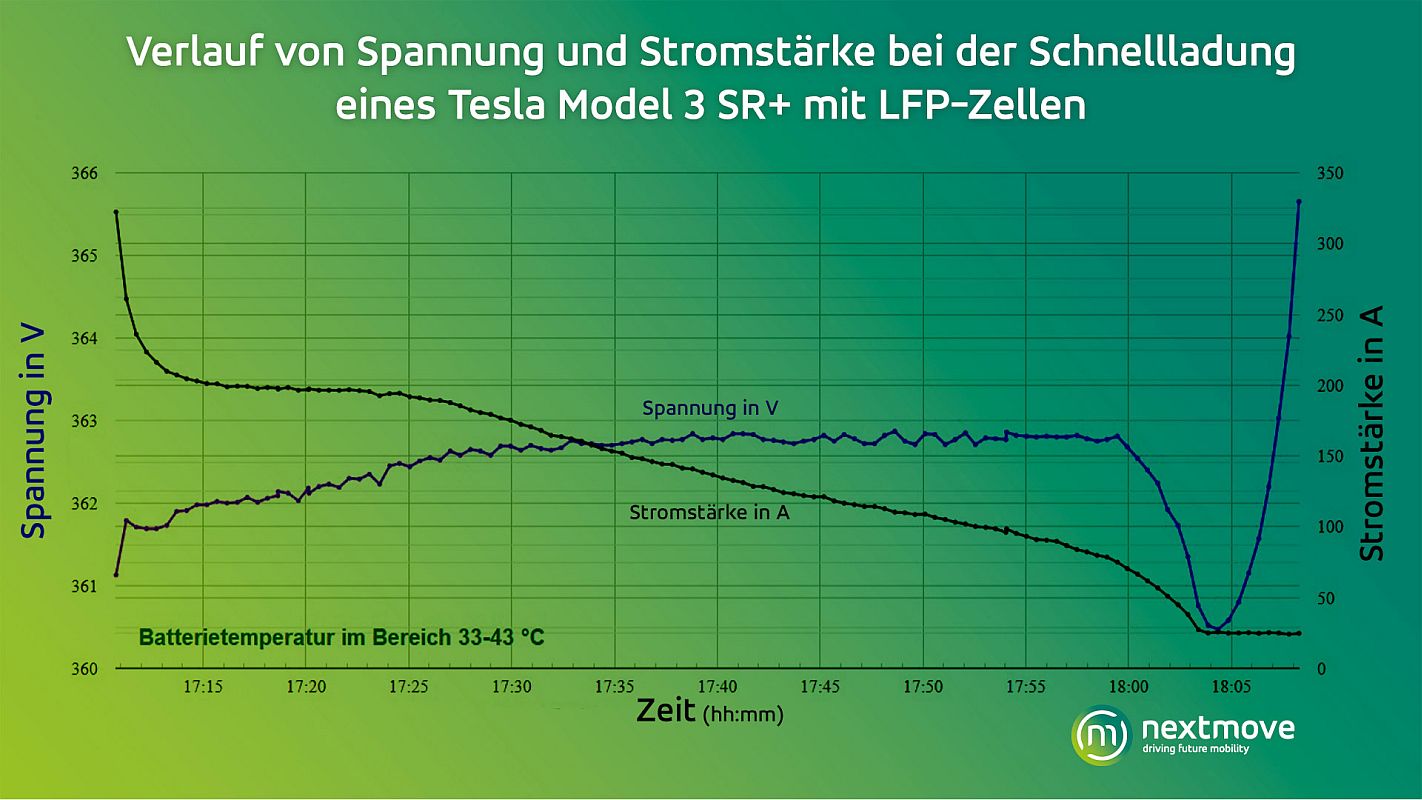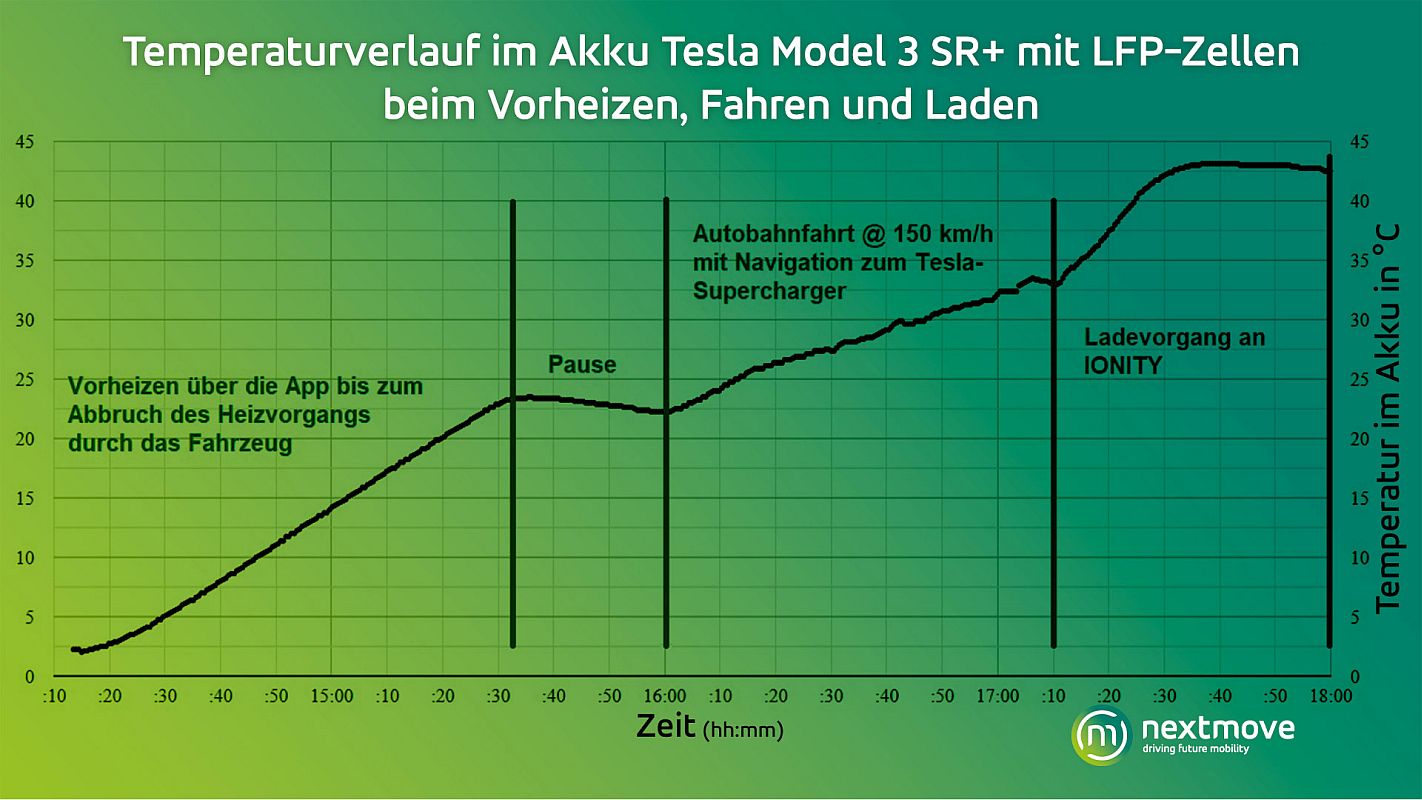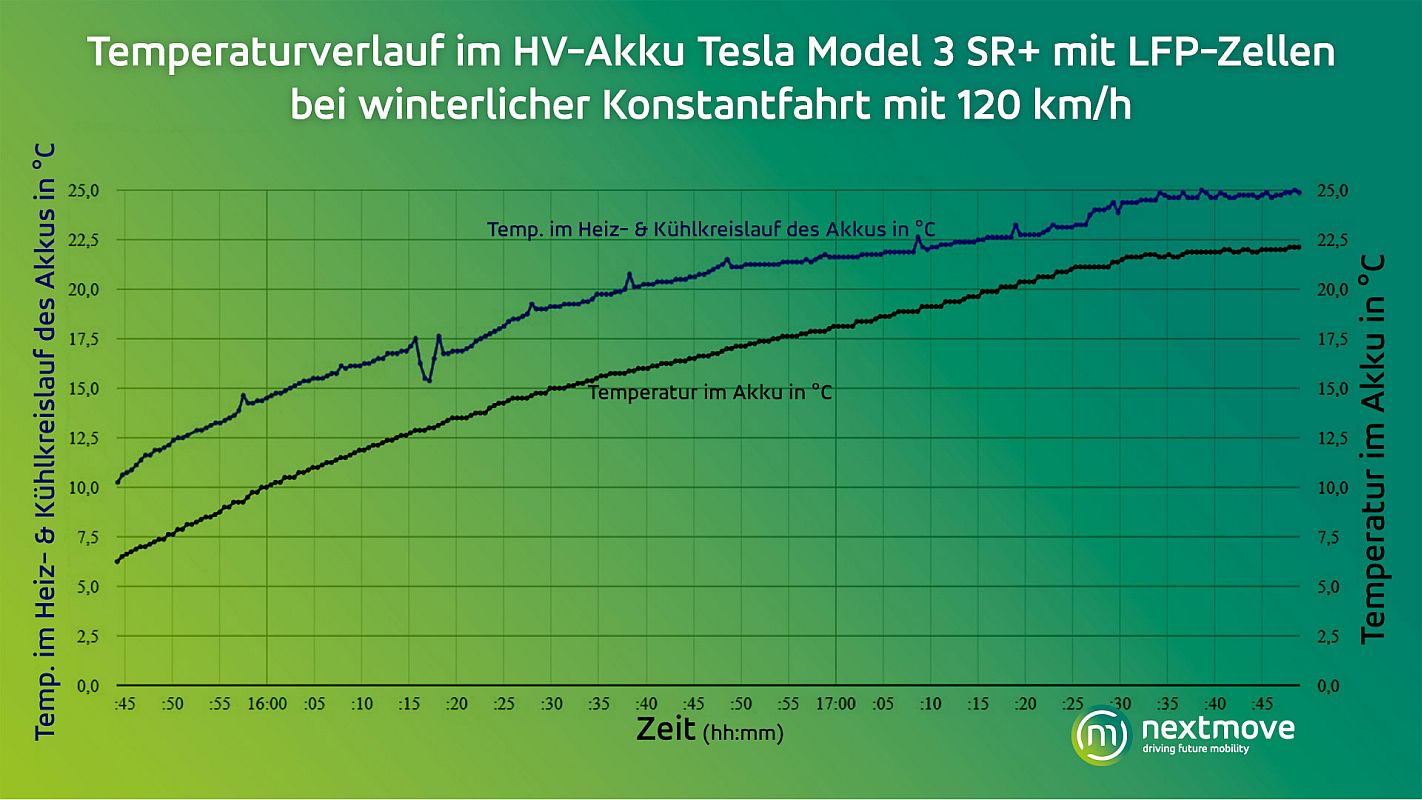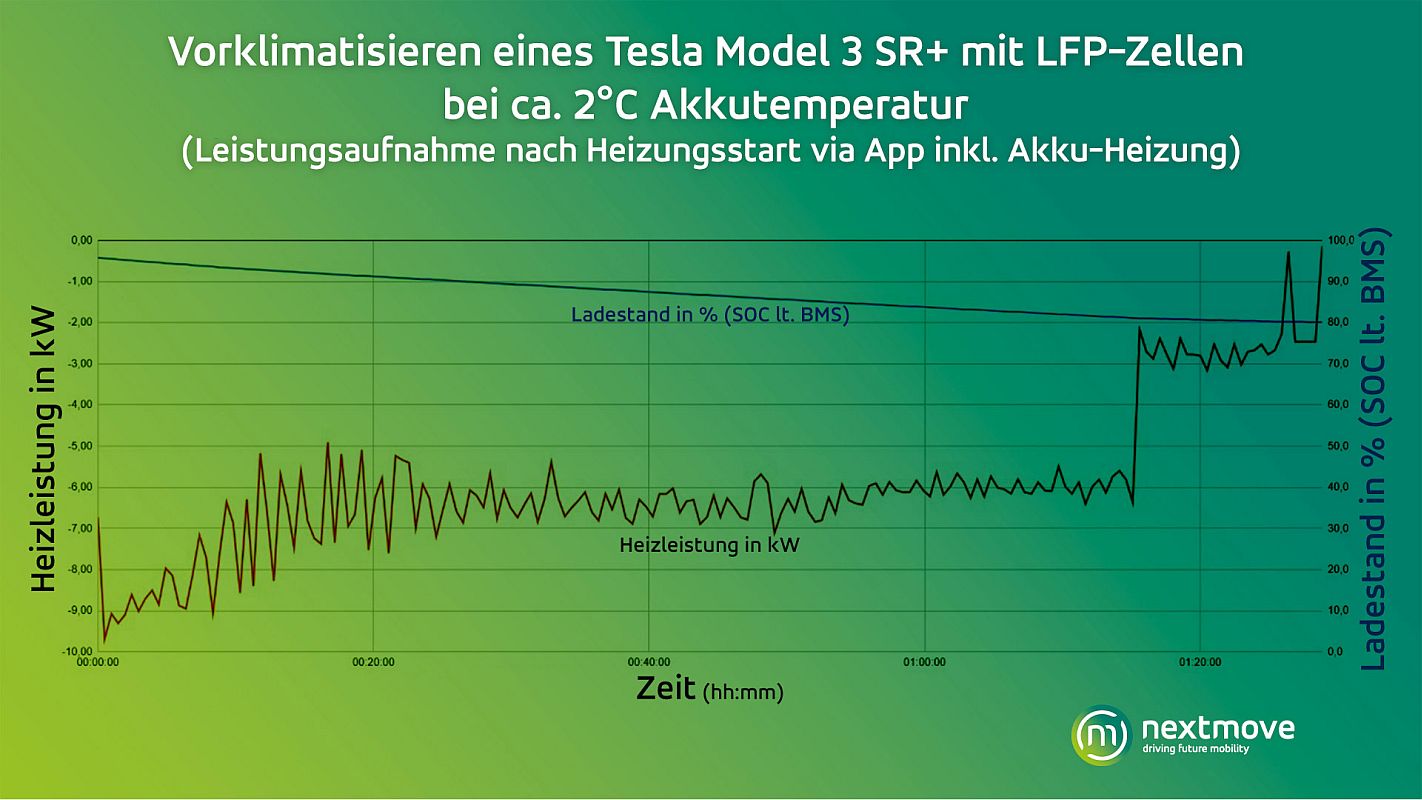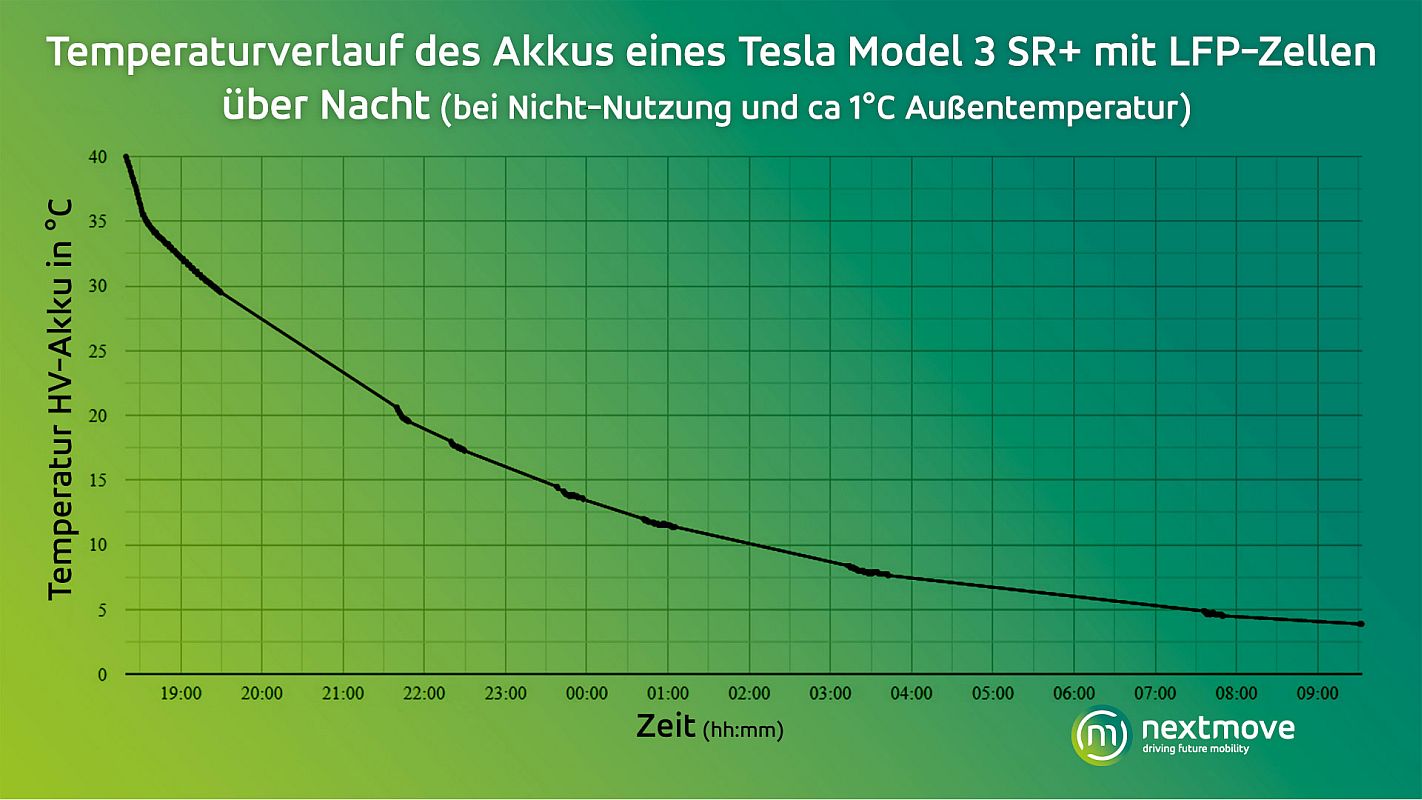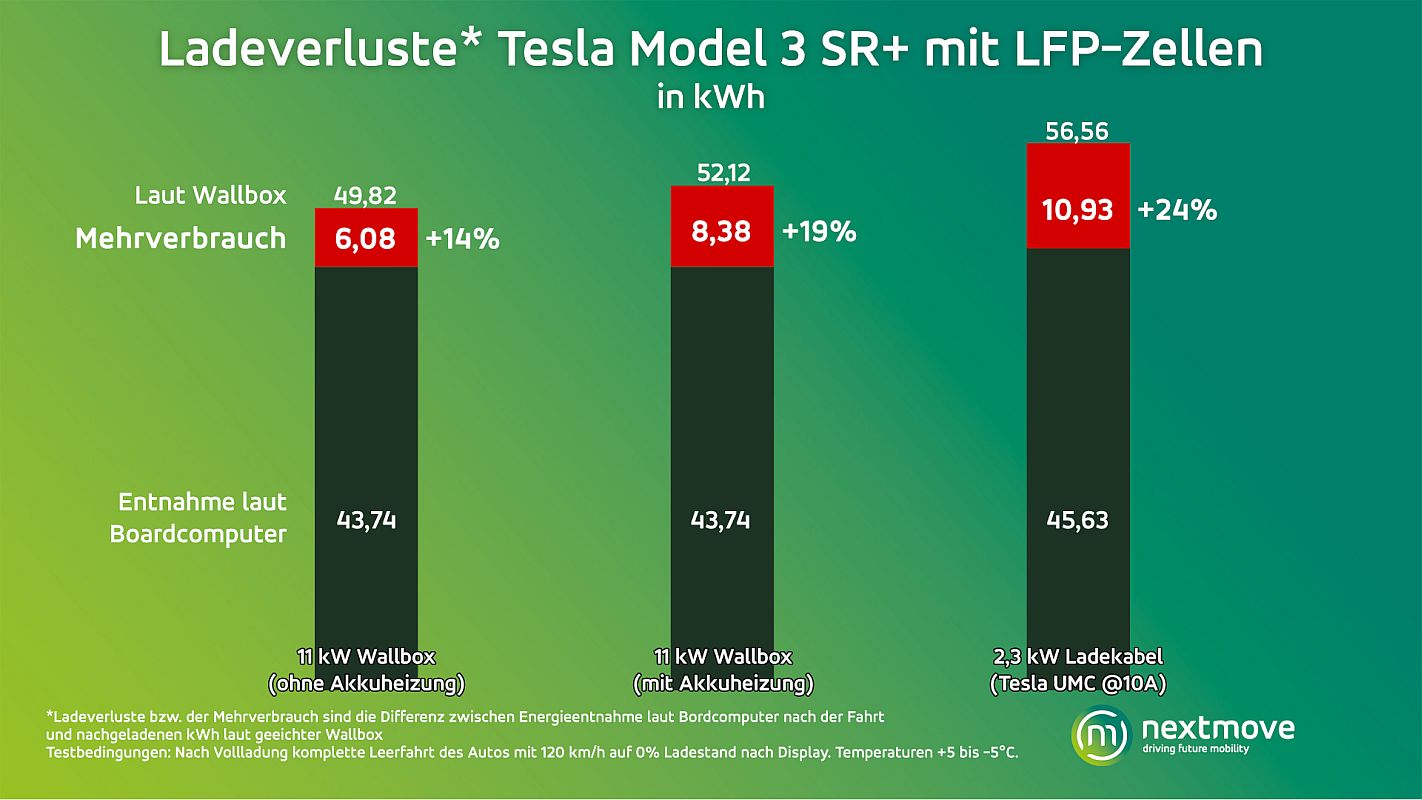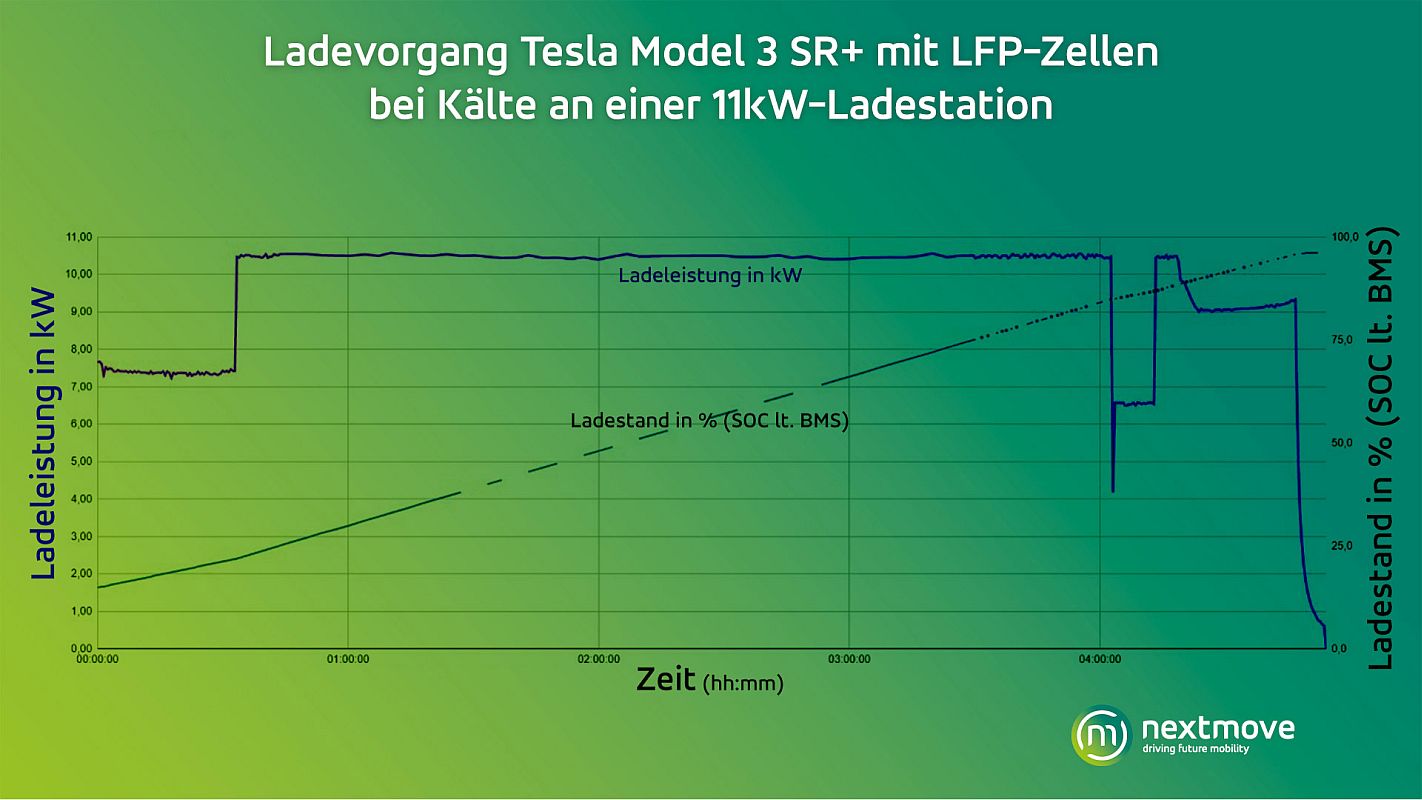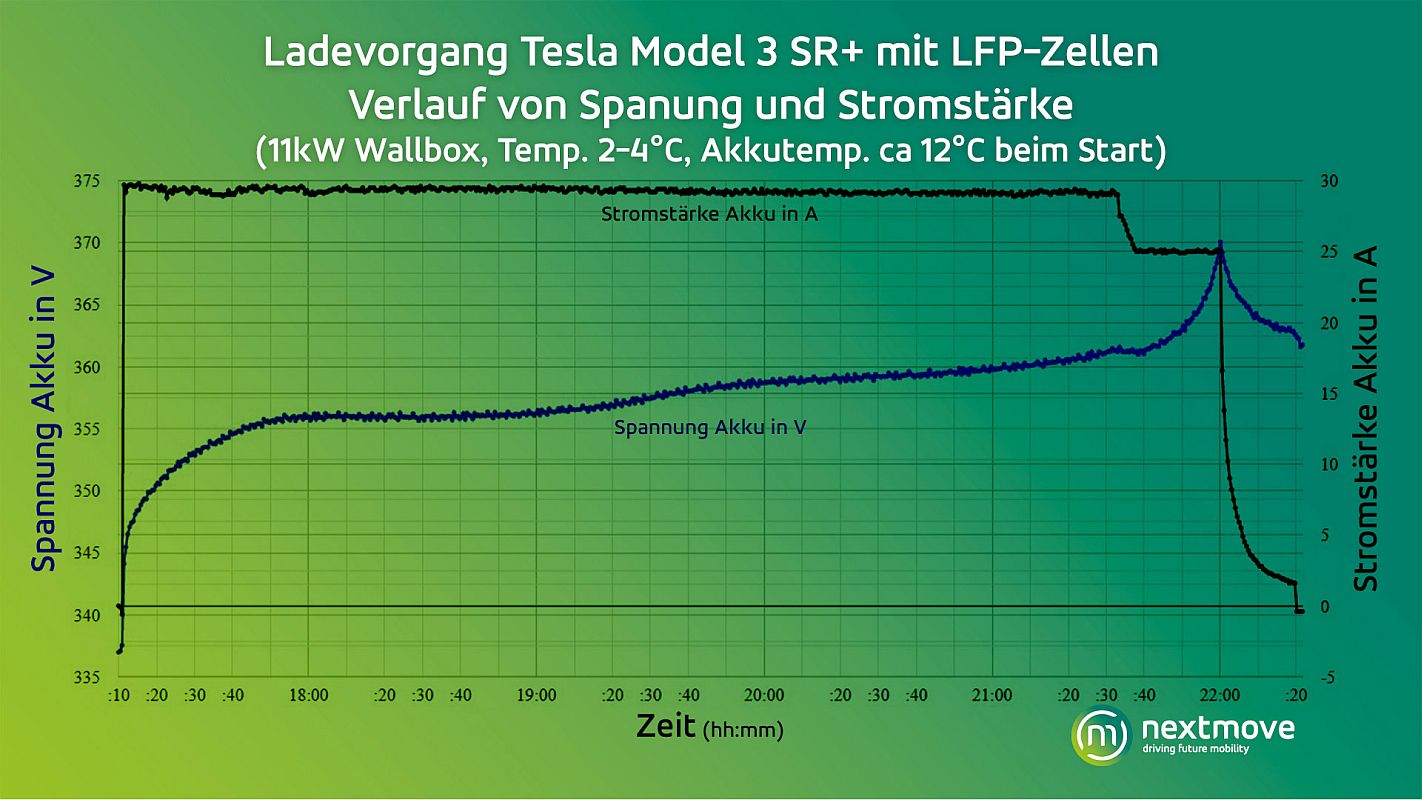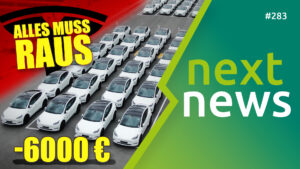In the current video, nextmove delivers an all-around review of all relevant test disciplines with regard to the winter suitability of the Tesla Model 3 Standard Range+ from Chinese production. Tesla delivered around 15,000 Model 3 in Germany in 2020, of which around 70% were with the large battery and all-wheel drive. 30% were the base Standard Range+ with rear-wheel drive and small battery. In December, the share was as high as 40%. This variant came for the first time from Chinese production with a different battery technology. That is why the cars were offered with an additional price reduction of 3,000 euros. After the general price reduction in January, the Model 3 Standard Range+ costs „only“ 35,000 euros after incentives in Germany.
Currently, various videos and forum posts about this car are circulating on the web. Many users are dissatisfied and feel left alone and deceived by Tesla. With the video, nextmove wants to provide clarification and classification with concentrated expert know-how. Managing director Stefan Moeller has tested the car intensively over six weeks and covered more than 1000 test kilometers. His conclusion: „No other electric car has provided us with such stark test results so far.“
The video shows advantages and disadvantages of this battery technology, because it’s not just about Tesla – other manufacturers are also relying on these batteries in the future. It will be shown why lithium iron phosphate batteries are technically a special challenge for all manufacturers!
The following questions are in focus:
- What are the problems with usable capacity, range and consumption in winter?
- Where do the high charging losses come from?
- Why do the cars at the Supercharger sometimes charge so slowly?
- What makes these cars „tick“ and what strategies does Tesla use to combat the cold?
- What do you have to do so that the car charges quickly?
- When should you preheat the battery in everyday life?
- How does the car behave after the latest software update?
- What does Tesla say about it and how are customers informed when buying and using it?
In the video nextmove comes down hard on Tesla, but also shows affected Tesla drivers a first silver lining on the horizon! In addition, it is resolved, which battery get customers who order a Tesla Model 3 Standard Range+ today.
What are customers saying about the Model 3 from China?
The exterior condition of these cars is the best Tesla has ever built. Paint, gaps and finish are top notch inside and out. The handling and interior noise are also good. Despite this, many customers are massively dissatisfied and comment on social media about the battery, range and charging:
- „A bit of disillusionment has set in. With 90% battery only 160km.“
- „Currently 29kW charging power at 26%. This is far too little.“
- „Do you have any assistance? My Model 3 charges maximum to 80%.“
- „Drove the battery to 10% yesterday, charged overnight at the socket. Car stopped charging at 68%.“
- „Had 45% earlier and 8 hours later only 21%. I just want to understand this car.“
- „Annoys me slowly really that the box loads so slowly…. So I have not imagined“
- „This is just big crap. My wife was served: „you had told me before the purchase but differently.“
- „A useless pile of garbage it is. … Tesla says it’s all normal and fine. For me, unusable and unacceptable.“
Another nextmove viewer got stranded. His car jumped on the highway within 2 minutes from 14% to 0% charge and has shut down. He was driven to the next Supercharger by tow truck.
There is no information from Tesla about the problems. Many have fulfilled their personal Tesla dream with the car and invested more money than they have ever spent on a car before, even if it is „only“ the base. Long-distance capability through fast charging and simple operation is Tesla’s central product promise, and until now that has also applied to the entry-level models. It is possible that this is different now. How bad is the car really or is it all just a big misunderstanding?
nextmove offers test fleet for all
nextmove is Germany’s leading electric car rental company. With nearly 400 vehicles, including 40 Tesla, the company offers thousands of customers a year at 12 locations the opportunity for a personal everyday test with various e-cars. Most customers are enthusiastic and the decision about the drive of the next car is usually made quickly with a rental. In individual cases, however, customers also discover that the actual favorite among the models does not meet their personal requirements profile – so a rental at least prevented an annoying bad purchase.
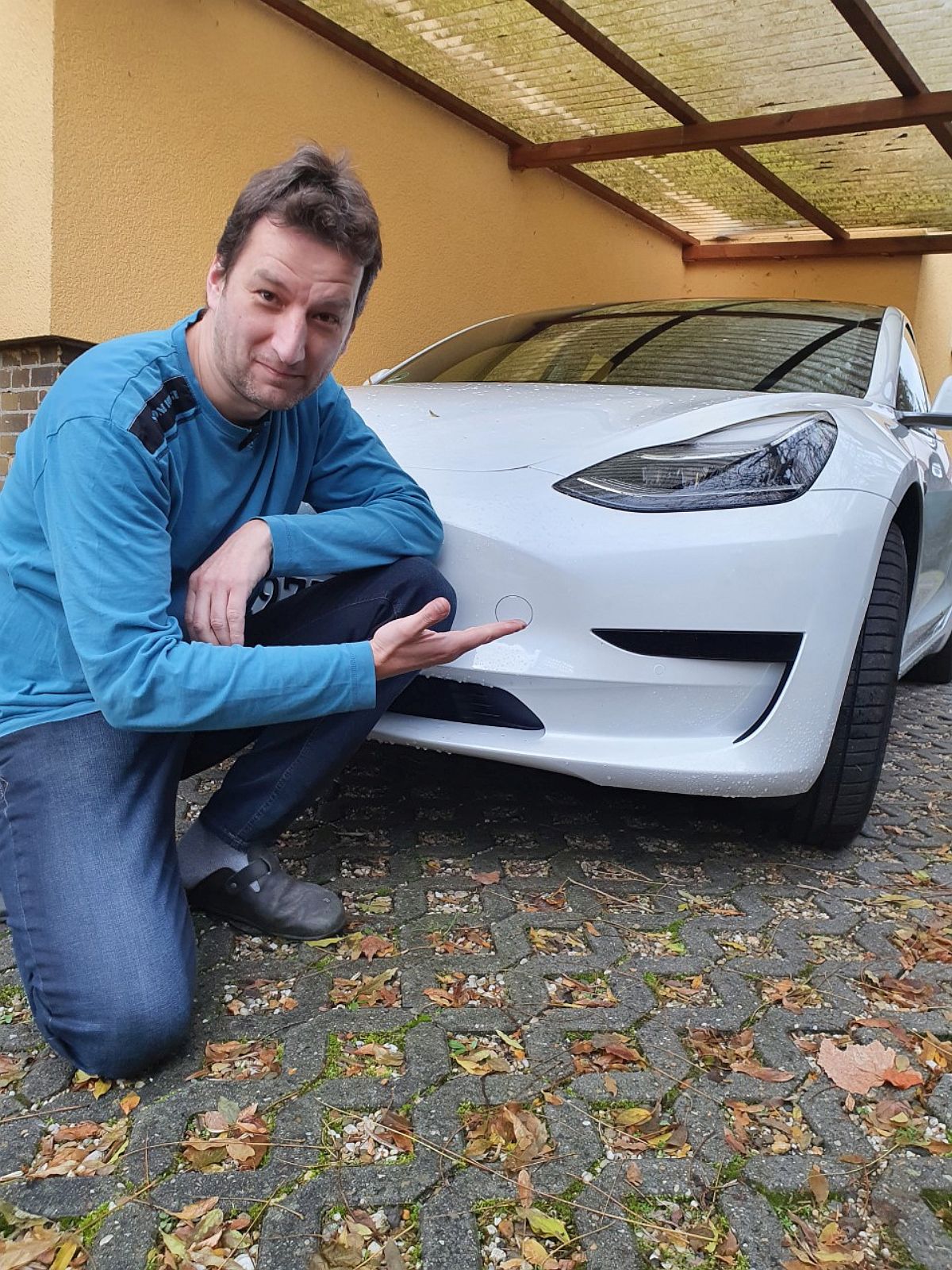
What does Tesla say about the new battery technology
Customers‘ issues with the new cars are clearly about the battery and the software. Actually, both topics in which Tesla has a pioneering role and yet it’s not running smoothly with this model. Now you might think that there are data sheets and catalogs, so everyone should read what they get beforehand and not complain afterwards.
With Tesla it is not so easy. There are no brochures, price lists and technical data sheets. Only rough data is shown on the homepage. There is no real performance information. Tesla also does not provide any information on battery capacity before the purchase. Furthermore Tesla does not provide any factory information on the central purchase argument of fast charging!
That was different a few years ago. After all, fast charging is a software feature at Tesla that can change at the manufacturer’s discretion during the life cycle of a vehicle. Tesla therefore no longer specifies the data so that it doesn’t have to be measured against it later. On the homepage, it simply says: „Up to 275km in 15 minutes recharging.“ Of course, this statement refers to the large battery under ideal conditions. The customer does not find out how fast the small batteries charge.
But what kind of battery does my car have anyway? The owner’s manual provides information on this: „Liquid-cooled lithium-ion battery.“ That can be anything, of course. No cell type. No capacity specification. Nothing. The customer buys the car virtually blind, trusting in range and acceleration. But isn’t the battery supposed to be an improvement? Yes. In many respects it is. The data sheet of the Tesla battery is, of course, a secret. The cells are supplied by CATL, one of the cell market leaders from China. But comparable batteries have been around for many years and much is known.
General advantages of LFP cells:
- A high number of charge cycles, up to 10,000 are possible, meaning the battery should outlast the car by far. More than two million kilometers are possible.
- A wide temperature range, high load capacity and good fast charging capability of theoretically up to 150 kilowatts in the Model 3.
- The low risk of thermal runaway, which is understood to be spontaneous combustion that becomes a chain reaction by spreading to neighboring cells.
- A high electrical efficiency for a total cycle of charge and discharge together of greater than 91%.
- Low self-discharge when stationary of circa 3 to 5 % per month.
- Better environmental compatibility and resource conservation through the renunciation of cobalt – and at Tesla also nickel – while at the same time easy recyclability.
- And of course: significantly lower costs in purchasing for the manufacturer.
Where are the disadvantages and problems?
- Significantly higher weight, in the Model 3 after all just under 150 kg for the small battery.
- On the cold compatibility is not much known. Individual manufacturers cite -45°C as the limit for charging and discharging.
- A very flat voltage curve during charging and discharging makes it difficult to determine the state of charge.
Quick charging of the Model 3 from China
nextmove has intensively tested the Model S Standard Range+ in December 2020 and January 2021. In all tests, outdoor temperatures were in the range -5 to +5°C, mostly around zero. First, fast charging was investigated in different scenarios. Scenario 1: Arrival on winter vacation and there is no charging option and the driver wants to make a quick trip to the Supercharger the next morning. Scenario 2: A Model 3 driver does not have his own charging station and wants to cover his energy needs in everyday life with occasional fast charging.
The car was driven to a nearby fast charger after a frosty night, but did not fast charge. Only about 12 kilowatts of charging power was achieved, which is less than 10% of what the car was supposed to take. So far so bad.
However, this is not a problem of the China Teslas until then, but pretty much all e-cars would have behaved like this or similar in this situation, even the expensive Teslas or Porsche Taycan. Subsequently, the car was driven for about 30 minutes, and a Tesla Supercharger was recorded as a navigation destination. Then the car actively starts a preconditioning of the battery (i.e. a heating process in winter) and shows this to the user in the display. Nevertheless, it was only possible to charge at the fast charger with about 30 kilowatts of power. This led to the negative user experience described at the beginning, because the charging power remained at this level over the course of the next 15 minutes and the entire charging process would probably have taken two hours.
The matching evaluation in the graphic shows: driving off when the battery is cold at 2 degrees does not cause the battery management to heat the battery. Most German electric cars would heat the battery in this condition. At the first charging stop with about 10 kilowatts of charging power heats the battery, but manages it in 15 minutes only from about 2 to 5 ° C, without the charging power improved.
Then navigation to the Supercharger activates the preheat function. This heats the battery to 13°C after 30 minutes of driving. A VW ID.3 would have now already charged with about 60kW – the Model 3 achieves only half of that. After 15 minutes of charging, the battery was then at 17°C, but the charging performance was still unsatisfactory at 30kW. The normal user would probably turn to Tesla and ask for help.
In the next test run, nextmove liked to get to the bottom of things to find the optimal charging curve. For this, the test was started again with a cold battery. First, the preheat function was started in the app, and then the car showed an icon for preheating the battery in the app. This process took over an hour until it was terminated by the vehicle, the charge level dropped from 98 to 80 percent.
Then test driver Stefan Moeller started for a fast highway drive of about 120 kilometers at 150 kph, choosing a Tesla Supercharger as navigation destination. The display in the vehicle showed active preconditioning of the battery for almost the entire drive. The battery was then almost empty and presumably at optimum operating temperature. The charging power was briefly at 120 kilowatts, but immediately dropped again and stabilized in the range of about 70 kilowatts. The Model 3 thus charges slower than the competition from VW, specifically an ID.3 with a medium battery.
The next graph first shows the course of voltage and current of the optimal charging process. What technically savvy users will notice is the particular voltage curve in blue. In the range between 8 and 95 percent charge level according to the display, the difference in voltage is only about 1 volt.
The course of the battery temperature as a basis for the high charging power was particularly exciting during this test drive. The annotated graph shows the course over 4 hours of testing from 2 to 43 ° C.
By the way, at about 40°C battery temperature the car had switched off the battery heating. After that, it only went up slightly and the curve flattened out. But the battery was not cooled. This information does not emerge from the graph, but was determined separately.
For comparison, another test day was determined when starting the car without preheating and not selecting a Supercharger as a destination. The test was at a constant 120 kph until the battery was empty.
In blue the graphic shows the heating circuit of the battery, this runs flat ahead of the battery temperature with about 3-5 degrees. Presumably, the battery was also heated here the whole trip with, although no Supercharger with was used as a destination input. Possibly even waste heat from the engine is used for this. At the end of this empty drive, we are after all at 22 °Akkutemperatur, which would have been sufficient but not yet for full charging power.
In the test, the battery charged from 6 to 75% in 32 minutes after all. This is significantly better than the values with cold battery. But the expectation of many customers is based on the Model 3 SR from US production. These charge almost 175 kilowatts at peak, the 100 kilowatts are only undercut at about 45 percent charge level. That’s a different world. For the test vehicle, there was a software update shortly before the editorial deadline that brought improvements. These are considered in the conclusion of the test.
Also of interest: What are the costs of such a preheating process? To do this, we again show the heat output over time. Almost 75 minutes the car draws 6-9 kW from the battery and heats it up to 22°C. This battery maintenance costs once about 3 Euro. But the car had continued to heat during the drive. So all in all you need roughly 2h driving or/and preheating. The cost are estimated about 5 euros of heat investment into the battery at the temperatures in the test.
It would be nice if the battery not only stores electricity, but also heat for a while, so that the user does not have to spend so much energy the next day to charge properly fast. Unfortunately, that is not the case. The next morning, the battery was again cooled down from over 40 ° C to 5 ° C.
Range and usable battery capacity
Range is not always that important in everyday life, but for many customers it is a decisive purchase criterion. And if you see the comments from customers mentioned at the beginning, there’s a lot wrong with this topic, too. So nextmove tested it. For this, the car was first fully charged in two complete test cycles and then run down to 0% on the on-board computer display. The tests took place on dry roads and temperatures just above freezing on a flat freeway circuit around Leipzig. The results of both test runs were nearly identical, with a range of 230km. Nextmove estimates that 30% higher ranges are possible in the summer.
It was noticeable during both test drives a low net withdrawal from the battery – the on-board computer showed 44 to 46 kWh withdrawal. The vehicle registration document shows 55kWh. The question of whether this value is gross or net was left unanswered by the Tesla press office when asked by nextmove. Comparable values for new Tesla Model 3 from US production are in the range 51-52 kWh withdrawal according to the on-board computer. The cause of the difference of 5-7 kWh to the test vehicle explains nextmove in a later part of the video.
No secret overweight in the Tesla Model 3
Based on deviations in previous tests, for example, with an Audi etron 55 quattro, which revealed 120 kg overweight on the scales, nextmove has also reweighed the Tesla Model 3 from China. The Tesla homepage states a weight of 1,745 kg, this figure does not include the driver. The scales in the test showed 1760 kg. In this respect, everything is okay. No secret overweight, because the charging cables were in the car and the test vehicle was also equipped with a trailer coupling. The weight including the driver is entered in the papers, 1,825-38 kg for our test car. The permissible total mass is 2139 kg. That makes about 300 kg payload.
Vampire losses and load losses
The term vampire loss is actually exclusively associated with Tesla. It refers to the vehicle’s own losses when stationary. It must be said clearly that Tesla is in a league of its own in this discipline. Probably no other series-produced e-vehicle consumes so much electricity when not in use. What does Tesla itself say about it?
A look in the user manual shows the specification of 1% per day, whereby manufacturer specifications describe yes mostly the optimal case. Tesla also refers to special factors. In the test, it was 14% over the course of a week of non-use, i.e. 2% per day. Depending on the software status and use of digital services such as guard mode or app queries, this value can of course deviate in both directions.
At 2% per day, that’s about 100 euros in electricity costs per year. For comparison, 100 euros a year is about the basic charge in the charging tariff at VW to be able to charge at IONITY for 30 cents/kWh. Volkswagen also provides a source and shows a document in the ID.3 First Mover Club that 1-2% per month of stand losses.
The vampire losses of course do not end up on the consumption display in the on-board computer. For the determination of the charge losses, this variable should therefore be excluded. Consequently, the energy requirement was remeasured in one piece, if possible, from 100 to 0% empty and then recharge. The first test showed a withdrawal of 43.74 kWh according to the on-board computer. Recharged at a 11 kW station with calibrated counter directly at the withdrawal point 52.12 kWh, according to the vehicle 51 kWh.
On the basis of the calibrated display, the additional cost is 8.38 kWh – that’s a whopping 19.2% losses. That’s not a good value. Efficient vehicles come in this discipline to values of 8-13%.
Regarding „charging losses“ it is important to note, that one can not measure or calculate the losses during the charging process. Recorded and shown are the deviations between the consumption according to on-board computer and the reference at the charging station and thus what was really consumed in the end and what must be paid. Even the preceding driving speed has an impact on the values, this connection had shown nextmove in previous tests.
Why does the Model 3 have such high losses of 19%? The reason is that the test candidate does not like the cold so much. The charging process did not take place directly after the empty drive, but there was a night of standing time in between. Nextmove wanted to bring the car to its limits, after all, to provide new insights.
And what happens overnight? The battery cools down again, in this specific case from 23 to 3°C and only then the charging process was started. A cold battery means higher internal resistance. This worsens the efficiency not only when driving, but of course also when charging. And something else curious happened during charging.
The Model 3 heats the battery first. Actually nonsensical, because in normal charging, the user approach is actually „I came to stay.“ At home the charging time is not as important as at the Supercharger. But apparently Tesla does not want to charge the battery in cold status.
According to the display at the charging station, the car has used about 11 kW, but of this only about 7 kW end up in the battery for about 35 minutes and he takes 4 kW for heating. The battery heat wentup to approx. 27 degrees and the large heavy battery pulls sluggishly after on approx. 12 degrees. Then the heater switches off and the 11 kW end up completely in the battery.
What does that mean for the complete charging process? The losses for the additional heating process were about 2.3 kWh. But if we had charged the car directly after driving with the warm battery, these would not have been incurred. Correcting the values accordingly results in 13.9% charging losses – which is absolutely fine for winter. In summer, 10% are certainly possible.
For a second charge test, the car was again driven from 100 to 0%. Withdrawal according to the on-board computer 45.63 kWh. Charging was then done with the Tesla-UMC, which is the emergency charging cable for household sockets. The device can actually charge with 13A, which would be about 3 kW. But that can melt some household sockets. Therefore it was throttled to 10A, about 2.3 kW. This time is was charged directly after driving at 22°C warm battery. The charging process took about 24h and the battery cooled down to about 7°C, because the night was with -5°C relatively cold. The car showed at the end 53 charged kWh.
The value of the charging station showed this time a higher deviation from the vehicle value namely 56.56 kWh. That’s almost 11 kWh charging losses absolute – and in percentage a whopping 24% and thus 10 percentage points more than at the wallbox. At 100,000 kilometers driven, the additional costs for snore charging are about 500 euros. nextmove therefore recommends the use of a wallbox.
What now makes the lithium iron phosphate battery so different and special?
On the one hand, this technology is new to Tesla. Tesla is always full speed and is willing to take risks. Tesla is a master of software and can comprehensively intervene in the entire vehicle fleet at any time and make improvements. According to a report by Inside-EVs, the supplier of the cells, namely CATL, confirmed that it took only nine months between the announcement of the Model 3 with this battery pack and the start of the delivery of LFP cells to Tesla. Normally, manufacturers take more like 2 years for something like that. So it sounds quite like the customers are in Beta Testing phase right now.
The sensitivity to cold has been pointed out so far, but there is a second challenge, namely: how does the car know how much power is left in the battery? This is controlled by a BMS: Battery Management System. One of the key thresholds is voltage. The graphic shows in blue the voltage curve of a normal charging process at a wallbox.
On the one hand, an extremely flat curve is noticeable in the middle area. On the other hand, the curve is very steep at the edges. After the charging process, the voltage dropped to about the value that it had in the charging process at 15% charge level and another 8 h later it was even lower. If you remember the statements of customers quoted at the beginning, the BMS of these cars is pretty much in the dark at the beginning, because apparently Tesla did not teach the cars the points where the battery is full and where it is empty.
As a new customer, you apparently have the choice between a car that simply shuts down at 14% charge on the highway. Or one that stops charging at 68%. The calibration of the battery has to be done by the customer, but Tesla does not provide any information or instructions. Unless the customer drifts around regularly in the Chinese Twitter called Weibo.
In a Weibo post, Tesla had asked owners to fully charge at least once a week. Not only that, they were to charge to 100 percent whenever the car was on the power source. Anyone familiar with Tesla’s communication policy knows that such a clear statement to customers is not made without necessity. From the steeply rising course of the voltage towards the end of the charging process, you can clearly see that this is a clear fixed point for the upper end of the capacity for the BMS.
In the lower range, it is already more difficult. At first nothing happens for a long time. Then suddenly comes the crash of the voltage and thus also the capacity of the battery and with it the range. And the car has to know beforehand where this point is so that it can count down the kilometers. To ensure that no one breaks down, Tesla keeps some reserve at the lower threshold. In the graph, we see on the one hand the charge level according to the internal BMS of the manufacturer and the value that Tesla displays to the customer.
In the nextmove test, the car was emptied to 0% according to the display, but the internal (not visible) value of the BMS still showed 13% power in the battery. This high reserve of course explains the low ranges of the customers and why nextmove only got 44 or 46 kWh out of the battery as shown before. In the further course, the car was heated for about an hour at maximum power and during this time, another approx. 5 kWh was taken out of the battery. Then came the shutdown message of the vehicle. The internal BMS value fell in this hour from 15 to 5.5%.
Estimation of nextmove
Tesla is the first major manufacturer who dares to go this way with the lithium iron phosphate batteries in the volume segment. The only exception is BYD in China. The first steps are obviously not easy, but competitors who also want to use LFP batteries in low-cost vehicles will look at Tesla with interest. Tesla is again a pioneer, despite the collateral damage we are currently experiencing.
If the battery’s lifespan holds up as expected, it will be virtually indestructible compared to others, and customers will get a car with a worry-free warranty on the most important component. On the second-hand market, the cars could be in hot demand in a few years, when the warranty on the battery has expired after 160,000 km and the batteries still have a very high range.
The future of these batteries lies primarily in the segments where it is about the price and solidity – and not about high performance parameters. These include commercial vehicles, for example, where there is enough space for a larger battery anyway. And small cars, which don’t need as much range and therefore don’t need a large battery. Volkswagen is also expected to use LFP cells in vehicles of the new small car generation. Such cars are sometimes moved for years without a single fats charging.
Tesla’s Model 3s with LFP cells are currently moving in a „safe mode,“ according to nextmove estimates, which means driving first and not breaking down if possible. Tesla collects data and will then readjust via software updates. The customer does some of the development work for the manufacturer. The battery is heated in all conceivable ways, at least when charging, but in some cases not yet strongly enough to reliably charge it quickly in winter. The sensitivity to cold will remain.
If you want to charge quickly in winter, you have to invest high losses in battery heating, and even on other occasions, the software controls the battery heating without user intervention. Currently there is a reduced usable capacity to prevent stalling, this is of course associated with a currently reduced range. Nextmove assumes that the cars will calibrate better in the course of use and through software updates. As outside temperatures rise, they – like all e-cars – will offer more range. And fast charging will also work better in the spring.
Which battery will current buyers get?
There was no statement on this from Tesla. On the Tesla homepage, there was a clear indication that vehicles from China will also come to Germany in the future for the base model. In the description of the Model 3 Standard Range, Tesla has increased the vehicle weight to the high value of 1745 kg without driver. Presumably, however, this was done only to take the wind out of the sails of dissatisfied buyers from December.
German customers with facelift models will get the proven lithium-nickel-manganese-cobalt-cells from the United States. The hint to it gives a list of orderers which is led in the Tesla Driver Forum. The 7th digit of the vehicle ID number stands for the battery. The China models have there an F and now there is again an E, so lithium-nickel-manganese-cobalt-cells.
What does the current update bring?
For this, nextmove ran another test on February 1 and first brought the battery to about 35°C operating temperature as described and drove the car to 0% charge level according to the display and then charged. The display briefly showed a peak value of 153 kW charging power, i.e. a significant increase and presumably a world record for MIC Model 3 during winter. But the charging power drops quickly and significantly as before.
The car had reached 50% after 20 minutes and recharged power for about 150 km winter highway kilometers. In total, the charging process took just over 1h and ended once again at displayed 91%, despite new software and warm battery still first mover status. Charged were about 50-51 kWh including losses.


